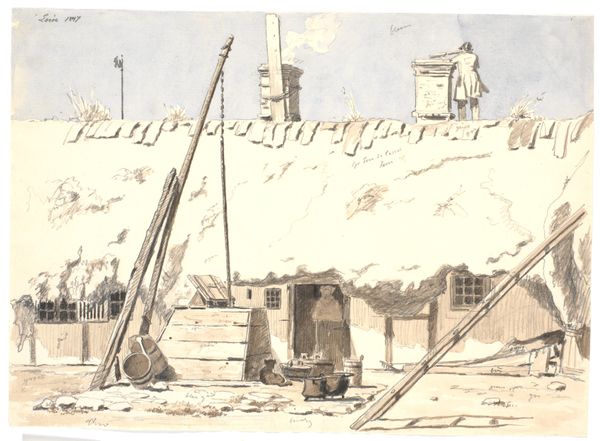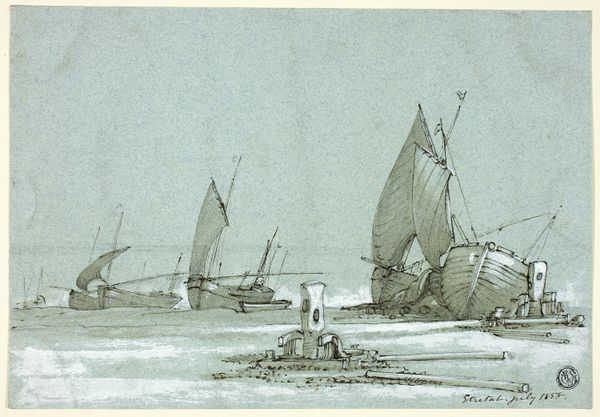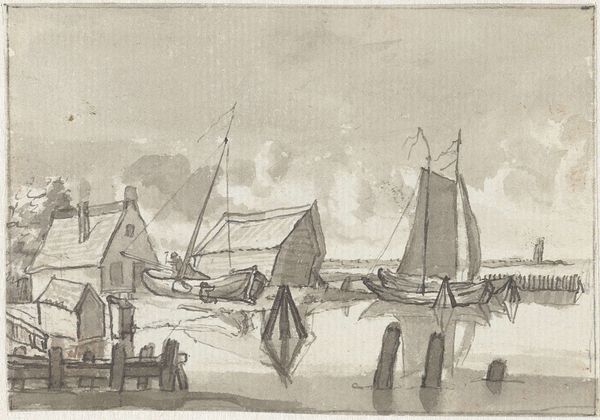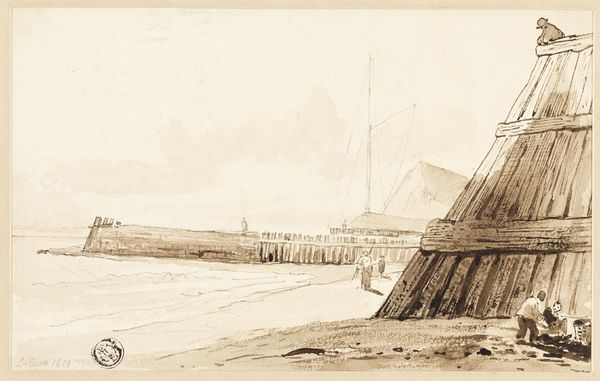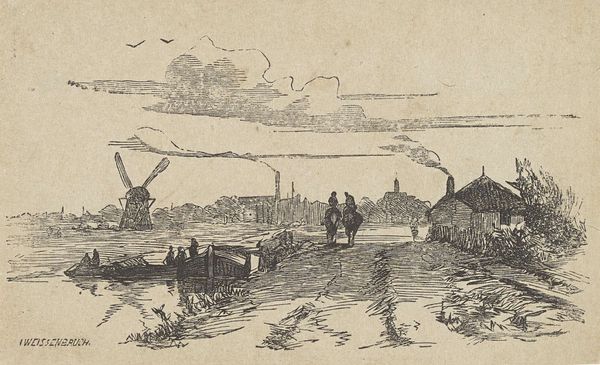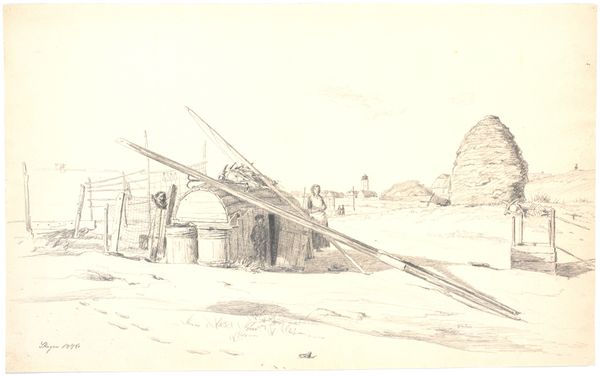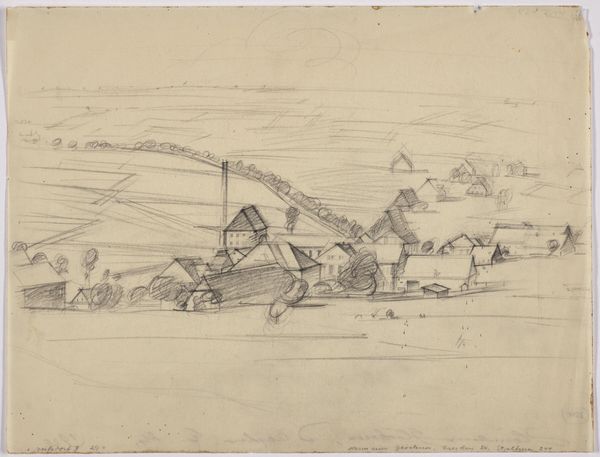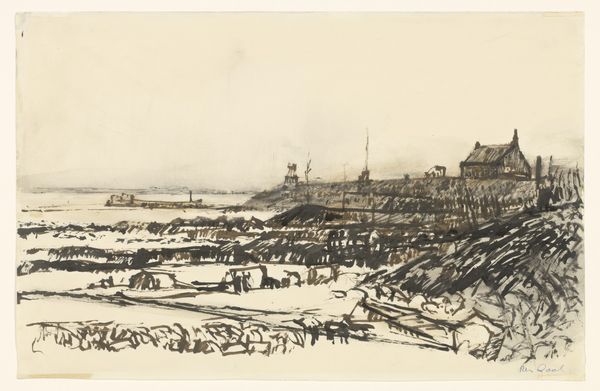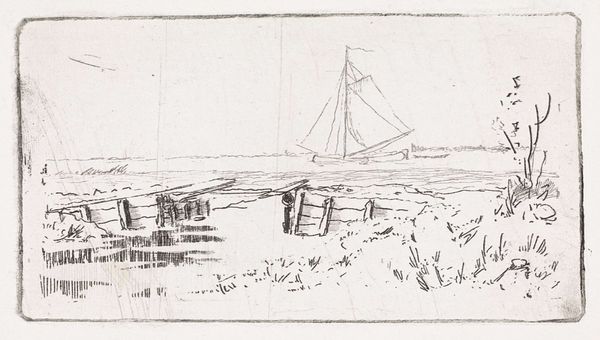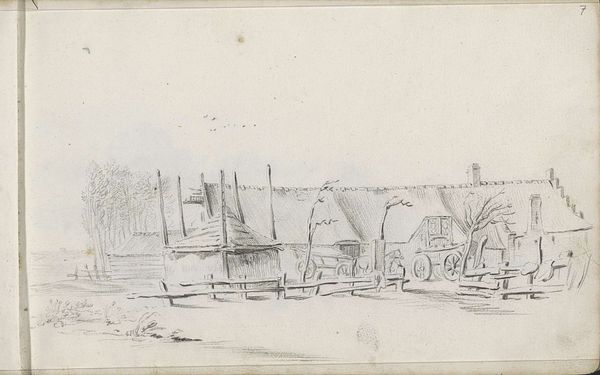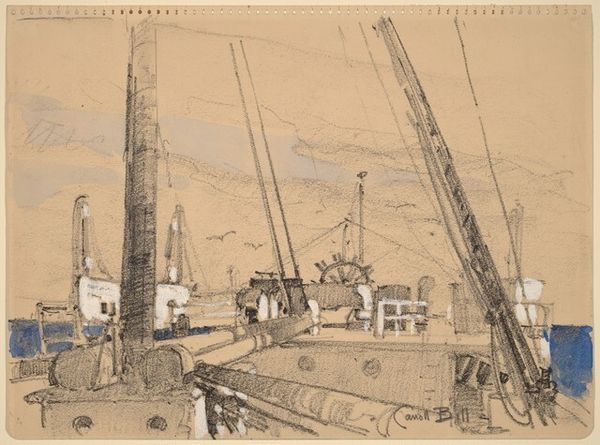
drawing, print, gouache, etching, paper, ink, pen
#
drawing
# print
#
pen sketch
#
gouache
#
etching
#
landscape
#
etching
#
paper
#
ink
#
sketchwork
#
pen
#
genre-painting
Dimensions: 173 × 251 mm
Copyright: Public Domain
Curator: Here we have Clarkson Stanfield's "Entretat", a work believed to have been created around 1858. It's a beautiful drawing with gouache and etching on paper. The scene depicts boats pulled ashore on a beach with figures tending to their nets. What’s your initial take? Editor: There’s a stillness that really captures my attention, even with the visible activity. The muted color palette enhances that mood; it almost feels like a photograph fading into history. The textures in the nets and boats are beautifully rendered. Curator: Stanfield was known for his dramatic marine paintings, finding great success in the 19th century. Prints like these, including this one here at the Art Institute of Chicago, broadened his audience. These beachside genre scenes were highly commercial, catering to middle-class Victorian sensibilities. Editor: Absolutely, it feels aligned with a moment of expanding leisure for that burgeoning middle class. But let's also think about the realities of labor represented. Those "leisure" images conveniently omit, or rather mask the exploitative labor conditions that funded them. Curator: That's a crucial point. Consider also the location – a busy fishing beach somewhere in France. Stanfield did travel and created on-site sketches, later developing more polished pieces back in his studio in London. It was this practice, deeply embedded in the artistic and economic climate of his time, that made him such a well-known and appreciated figure. Editor: There's this tension for me between aesthetic appreciation and the recognition that such imagery, as beautifully executed as it is, can normalize the social hierarchy. We have to address whose stories get told and how. Does this picture perpetuate idealised maritime pasts or offer insightful critiques about labour and community? Curator: The composition is skillfully managed. The eye is drawn across the horizontal plane of the beach, with the repetition of boats and figures creating a balanced, harmonious picture. This work showcases how deeply ingrained the artist was within his historical milieu, understanding its market needs and aesthetic expectations. Editor: Exactly! This image offers such rich starting points to examine how representations of work and leisure during the Victorian era intersect with class and identity. Thanks to these sorts of historical and aesthetic exchanges, my thinking around "Entretat" shifted from first impressions of placid scene, towards questions about the complexities it subtly suggests. Curator: And with this added understanding, our views move far beyond just a nice image; we confront the artwork’s wider meaning and its continuing relevance today.
Comments
No comments
Be the first to comment and join the conversation on the ultimate creative platform.
